INTRODUCTION
The importance of achieving and maintaining the extraction rate was mentioned in a previous article on extraction and milling gain. In this article, some of the things that a miller must check when the extraction rate drops will be highlighted. In an article of this nature, it would be impossible to name all of the causes of a poor extraction rate.
Satisfactory results can only be achieved if the miller carries out his duties efficiently and conscientiously. This would include all of the stages of the milling process: from cleaning plant, conditioning, to the actual milling. For the purposes of this article, we will start at the conditioning prior to the degermination of the maize.

01. SECOND CONDITIONING
It is vitally important that the maize is correctly conditioned prior to degermination. Incorrect conditioning at this stage would have an adverse effect all through the milling process.
Points to check are:
- The amount of water added must suit the type of maize being milled. Soft maize would require less water to be added than hard maize.
- The lying time prior to degermination. This should not be more than 20 minutes, but soft maize would only need half that time. If the maize is too soft, it will tend to break up more readily in the degerminator and some good endosperm would be lost through the screen of the machine to offal. Likewise, hard maize which is too dry will break up in the degerminator resulting in good endosperm being lost to offal.
Even if some of the endosperm in the throughs of the degerminator can be recovered, the oil and fibre content will be high which would make them unsuitable for inclusion in the higher grades of maize meals. This would adversely affect the extraction.
The miller must always be aware that there can be batches of hard or soft maize in the feed to the mill which could lead to a drop both in the extraction rate and the quality of the finished product.
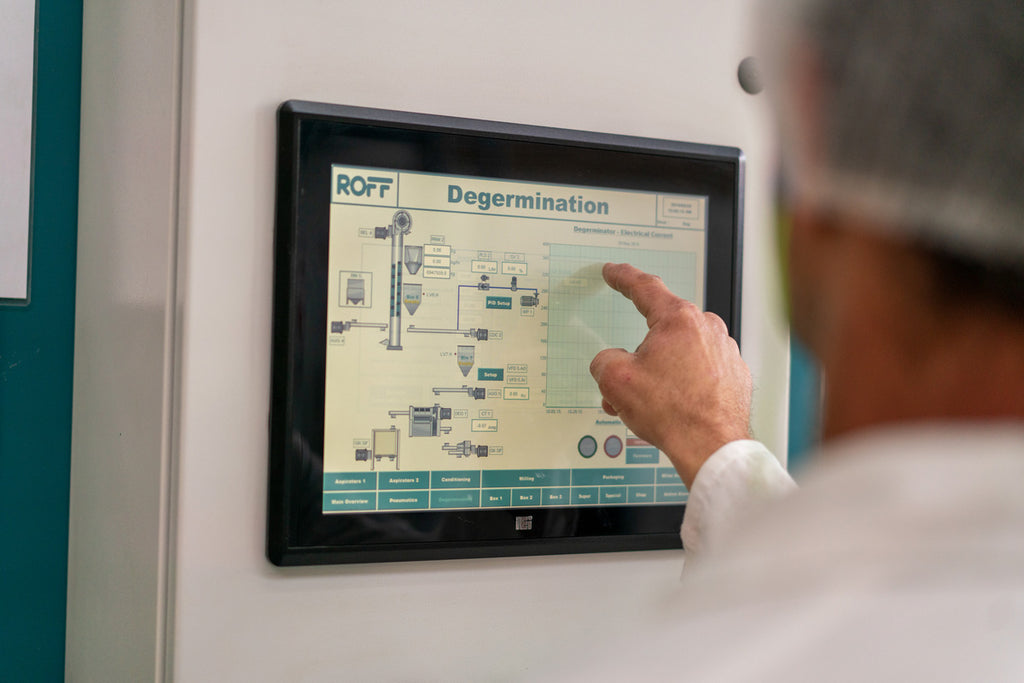
02. DEGERMINATOR SETTINGS
Having checked that the maize to the degerminator is properly conditioned, the next machine to check is the degerminator. Is it set up and working properly?
Check the following:
- Is the feed to the machine set at the correct rate? If a degerminator is underfed, the maize will stay in the machine too long with the result that it will be broken up into smaller particles, some of which could be lost to offal through the screen.
- Is the degerminator screen in good order? Holes in the screen could result in good endosperm landing up in the offal with a corresponding loss in extraction.
- Is the tail gate/retarding plate set correctly, allowing the maize enough retention time in the machine to remove most, if not all, of the bran or tip cap?
- If there is more than one machine in the mill flow, ensure that the feed is set evenly between them.
03. ASPIRATORS
Aspirators are used fairly extensively in a maize mill, mainly positioned before the roller mills, to remove any bran and germ from the feed to these machines and before the packing/binning of products such as samp, rice and grits to remove any loose germ or bran particles.
When looking for any problems relating to product quality or a drop in extraction, the following needs to be checked:
- That the feed to each of the aspirators contains the right type of stock. There could be a choke in the plansifter feeding the aspirator which would result in too much stock being sent to the aspirator affecting the proper operation of the machine.
- The quantity of stock to the machine is not excessive or too little.
- The feed must be spread in a thin stream across the full width of the air channel. A thick layer of stock will not allow all of the germ/branny particles to be lifted out of the stream and there is the danger that good endosperm could be lost to the liftings and end up in the offal.
- The liftings of the aspirator must be examined to see whether excessive amounts of endosperm are not being lifted out by the air currents.
- When aspirating fine stocks such as grits or rice, this is where the accurate setting up of the machine is most critical and where good endosperm could easily be lost to offal.
One of the principles of aspiration is that the particle size range in the feed to the machine must be as close as possible. Some millers recommend that the difference in particle size in the feed should not be more than four cover sizes. However, this is not always possible when designing a mill flow. Therefore extreme care must be taken with these types of stocks when setting the machine to avoid a loss in extraction.

04. ROLLER MILLS
Roller mills are the heart of any mill and the incorrect setting up of these machines can have an adverse effect on both the extraction rate and product quality.
In wheat milling, each of the break passage roller mills are set to a predetermined break release. The total of all of these releases is directly related to the overall extraction obtained in the mill.
In maize milling, the break rolls are in fact, sizing rolls to which a relatively small amount of germ/ bran is still attached as such the term release has no meaning in this case.
When looking for problems relating to a drop in the extraction rate, the following needs to be checked:
- On the B1 & B2 (1st & 2nd break) passages it is important to check the quality of the stock overtailing the scalping cover of the plansifter (normally an 8-mesh) that either goes to G1 (1st Germ) roller mill or to offal. There must not be good endosperm overtailing which could land up in the offal and cause a drop in extraction.
- The same would apply to the G1 roller mill as the stock overtailing the scalping cover definitely would go to offal.
- On the passages handling relatively pure stock with only a very small amount of bran, the rolls can be set to produce the correct granulation for the maize meal being produced. Here one should ensure that no good endosperm is lost to the tail end of the mill. It is always good milling practice to set these rolls using a sieve with a mesh size the same as that of the meal cover.
- When checking the roller mills to see if they are set correctly, ensure that the feed gate is set parallel to the feed rolls. If the feed is not set across the full length of the rolls, proper grinding cannot take place with the possible resultant loss in extraction.
- Check that the flutes are not blunt. When flutes are blunt, their normally sharp edges become rounded and they can no longer size the endosperm particles or scrape any endosperm off the bran particles. If the rolls are then adjusted so as to increase the grinding action, the stock will become warm, squashed and flattened. In addition some stock will become lodged on the roll surface causing rings to be formed. The flattened stock which will contain some good endosperm, will simply overtail the scalping cover on the plansifter with the resultant loss in extraction. Rather open up the grind and have the rolls replaced as soon as possible.
- Check that the roll flutes are not cutting the stock up excessively, making it difficult to separate the endosperm from the bran/germ particles. This can occur when worn rolls have just been replaced with new ones. The rolls will cut up the stock into finer sizes which could cause a loss in extraction. When setting the grind on new rolls, it is common practice to open the grind and let them bed in until the sharp edges are worn off. This usually takes about 24 hours.
- Not only must the grind on each roller mill be checked, but it is also important to check the stock feeding each passage. There could be an incorrect setting on an aspirator or a blinded or burst cover on the plansifter section feeding that particular roll passage.

05. PLANSIFTERS
Because there is no means of adjusting the way in which they operate, plansifters receive very little attention when the mill is running. When there is a problem with the extraction rate on the mill, the following points must be checked:
- Are there any covers that are burst (torn or holed) allowing good stock to be sent to offal or to a lower passage?
- Are there any covers that are blinded? This could cause good endosperm to overtail either to offal or to a passage lower down in the mill, resulting in a loss of extraction. Blinded covers are generally caused by the pad cleaners under the sieves being worn down to a size which prevents the apertures of the sieve being kept open. (The milling term for this is “rich dressing”).
When the above conditions occur, the miller must immediately stop the mill and rectify the problem.
Suggested millers’ checking procedure:
The miller must react as quickly as possible to any problems in the mill that affect the extraction rate and the quality of the finished products. As far as monitoring the extraction is concerned, the following procedure should be used to find and rectify the problem:
- Check the offal at the bag off or as it goes to the bin. Take a sample and see whether there is any endosperm in the stock; sieve the sample out if necessary.
- Then check all the individual spouts/conveyors going to offal in an effort to pinpoint the whereabouts of the problem, in the mill.
- If this does not help, go through each section of the mill as outlined in paragraphs 1 to 5 above. Once the cause of the drop in extraction is determined, make the necessary adjustments outlined in them.
- Wait for about an hour after completing all of the necessary adjustments and then calculate the extraction rate again to see whether there has been any improvement.
- Time is of the essence, so it is important that the miller knows his mill’s flow and where each spout/conveyor feeds to.
The following stocks should be taken out on a daily basis and laid out on an appropriate sample board(s):
- All the feeds to the various plansifters.
- All of the stocks under each of the plansifter sections.
- Feeds and grinds to the roller mill passages.
- Feed and liftings of each aspirator.
- All stocks going to offal.
Only by doing the above will the miller get to identify the stocks in his mill.


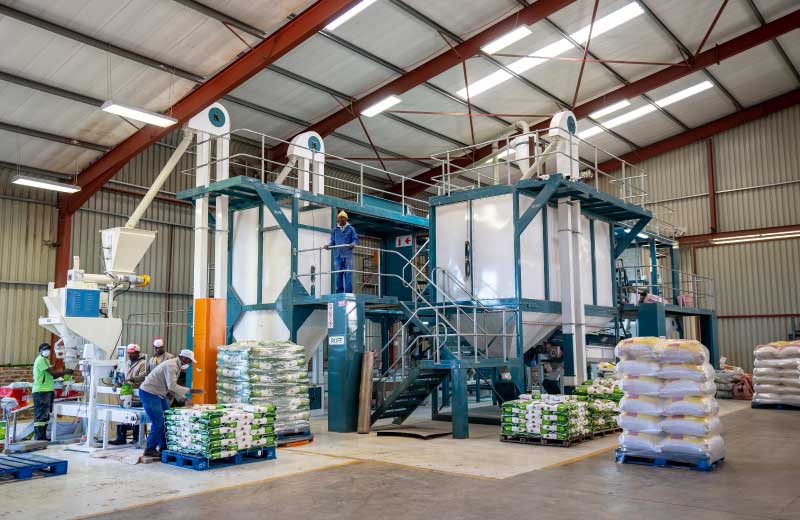
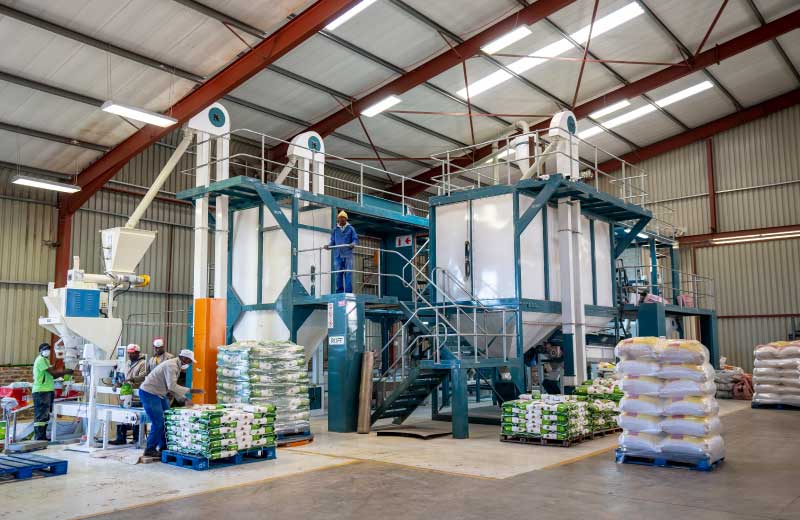
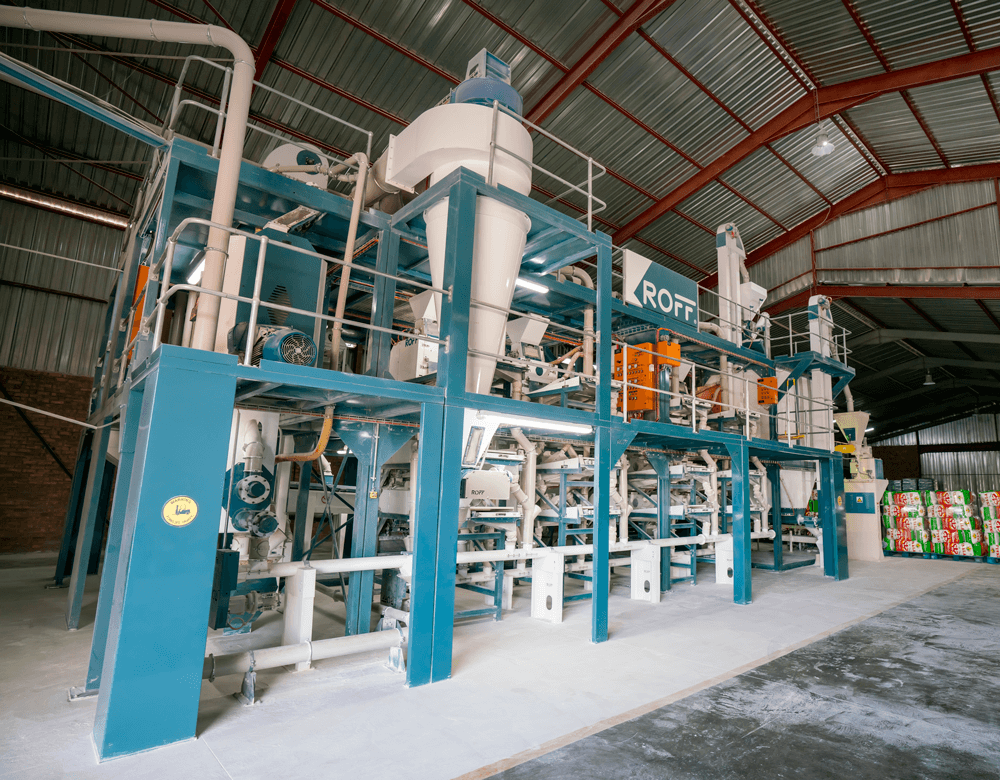
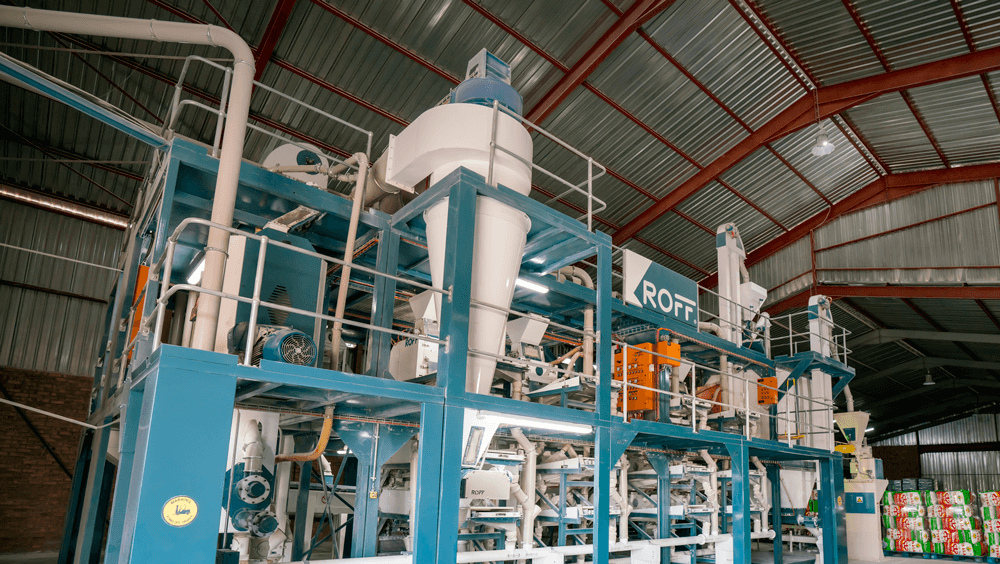
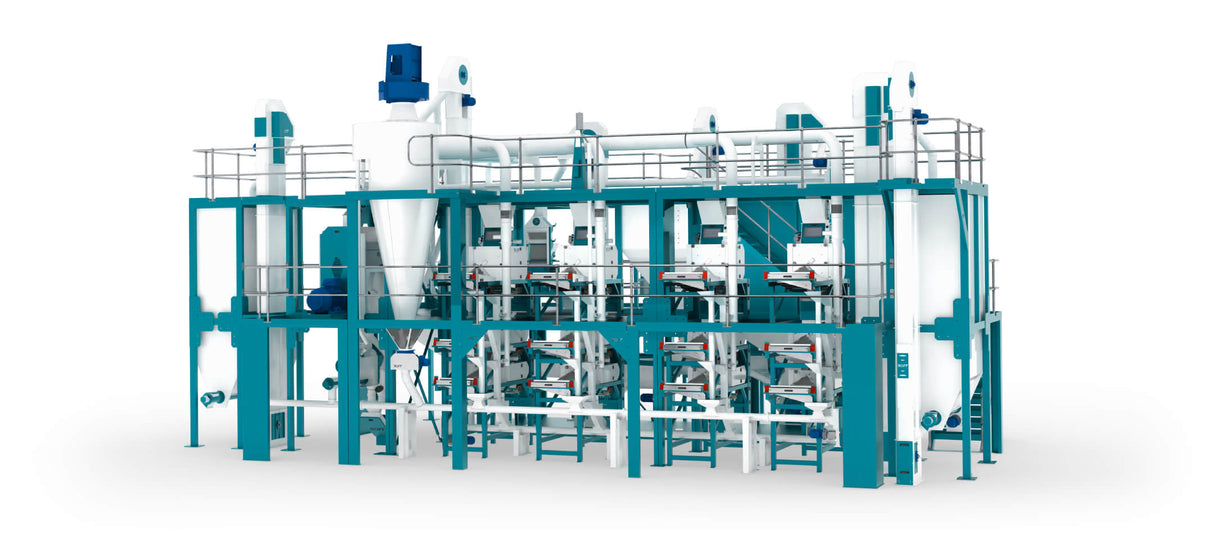
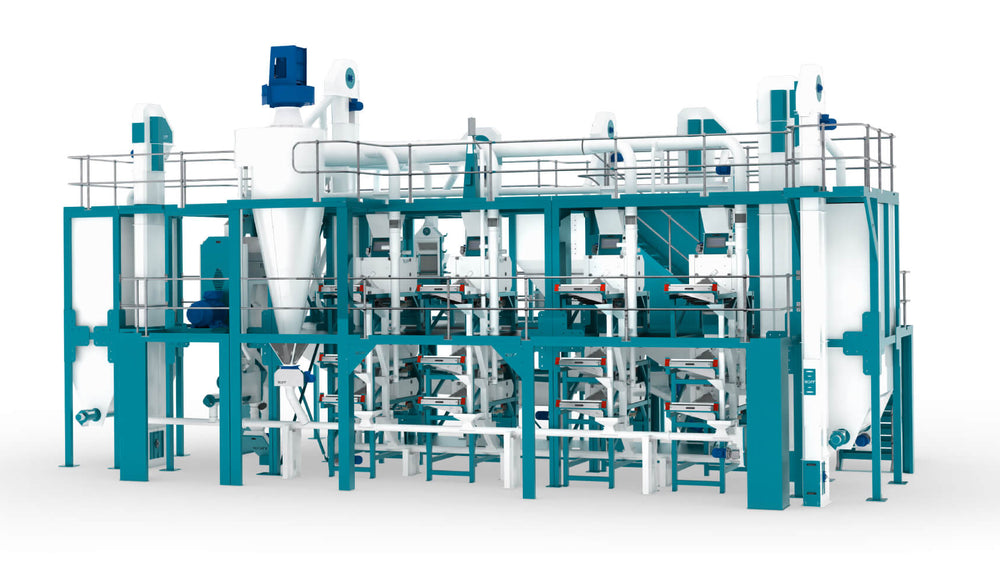

2 comments
Roff is a quality and best machine, only spare parts are hard to get in the market
Have been experiencing loss in extraction of wheat mill,would u pls assist to know what might be the cause
———
Roff Milling replied:
Hello Boniface, our sales team will get in touch.